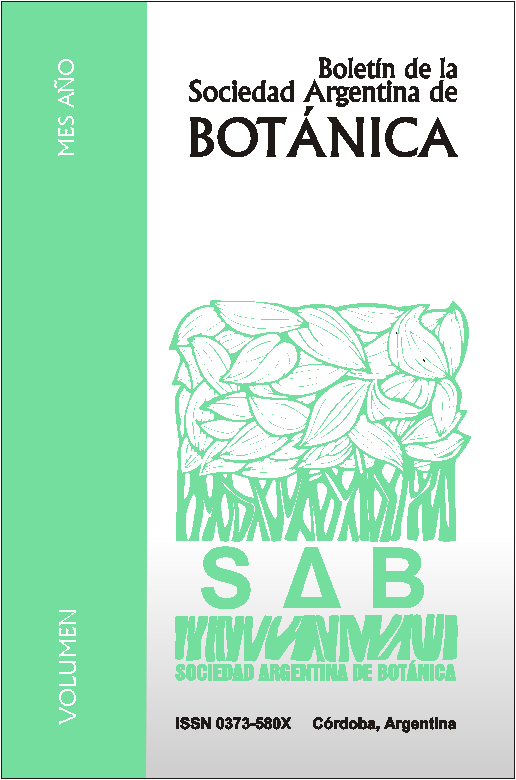Germinative variability of seeds from different populations of four species of native grasses from Patagonia: a case study in northwestern Chubut.
DOI:
https://doi.org/10.31055/1851.2372.v51.n1.14417Keywords:
Bromus setifolius, Ecotypes, Festuca pallescens, Germination, Hordeum comosum, Poa ligularis.Abstract
Germinative variability of seeds from different populations of four species of native grasses from Patagonia: a case study in northwestern Chubut. In this study, we analyzed the quality and germination behavior of seeds from different populations located on a west-east annual precipitation gradient (500 to 150 mm) in four species of native Patagonian forage grasses (Bromus setifolius, Festuca pallescens, Hordeum comosum and Poa ligularis), from NW Chubut. We observed differences in weight and percentage of filled seeds at inter- and intra-specific level. The seeds were sown in a common environment and the germination percentage and emergence speed were calculated for species and populations. We present data related to the germination of seeds (harvested in 2015) of these four species and we discuss primarily the results obtained from P. ligularis, the species that presented the highest inter-populational variability. In P. ligularis, a large percentage of seeds from the population of the driest site germinated/emerged in fewer days. This characteristic could be associated with these plants adapting physiologically to germinate, emerge and establish themselves quickly in response to the limited availability of water in this area. The genotypes of this particular population could be used for restoration programs in arid environments with annual rainfall less than 150 mm. Finally, due to the variability observed at least in P. ligularis, it is suggested for future breeding programs with these native species it would be necessary to analyze a greater number of populations to select potential seed banks.Downloads
Published
Issue
Section
License
Provides immediate and free OPEN ACCESS to its content under the principle of making research freely available to the public, which fosters a greater exchange of global knowledge, allowing authors to maintain their copyright without restrictions.
Material published in Bol. Soc. Argent. Bot. is distributed under a Creative Commons Attribution-NonCommercial-ShareAlike 4.0 International license.





